
Walking toward Creativity and Stumbling on the Divine
I almost let the events of the day keep me from my daily habit. On a new campus for a day-long event, I could have skipped my daily walk and used my lunchbreak to catch up on emails. The fortunate decision to stroll through the unknown campus led me to a beautiful place and some even more beautiful connections.
Through both personal experience and study, I have come to know of the connections among walking, spirituality, and creativity. As my spiritual life has mostly gone dormant, I have not focused recently on the sacred or the transcendental; walking and creativity have been more at the forefront of my mind. My springtime meander through a new landscape helped bring back to mind the spiritual and contemplative connections to walking and imagination.
The Setting
On that spring Saturday, I found myself walking across the campus of Marian University of Indianapolis. Suddenly I glimpsed an elevated space on otherwise flat ground. It was a garden with some rather typical elements and other surprising ones. There were trees and shrubs, footbridges and rock formations, but also what appeared to be a small temple or tea house. As I approached, I glimpsed statuary, especially Marian ones, scattered throughout. Paths wound around the varied spaces of the garden with benches to the side for pausing.
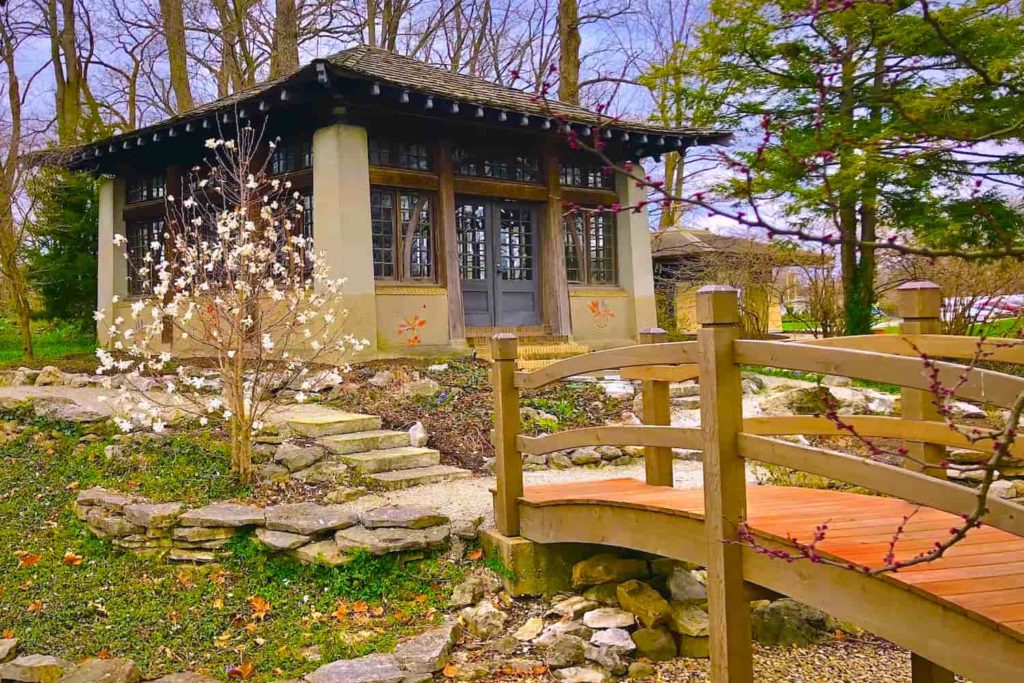
I twisted my way on the curving paths in the surprising solitude of the springtime garden. In the middle of a hurried day within an even more hurried week, I unexpectedly found peace.
Walking, Creativity, and Brain Science
I began my regular habit of daily walks not to find tranquility or transcendence, but rather as a healthy way to heighten my creativity. Innovative minds throughout history have commented on the creative power of walks. Beethoven is perhaps the most referenced creative who attributed daily walks to his imaginative prowess, but many others shared his view: Kierkegaard, Thoreau, and Tchaikovsky, to name just a few.
This anecdotal knowledge has been with us for centuries, but now we have the tools to examine scientifically the connections between walking and inspiration. Imaging technology, for example, has pinpointed the brain state of transient hypofrontality as a catalyst to creativity. Researchers have also identified types of repetitive activities, like walking, that bring about such brain activity. Furthermore, studies demonstrate that people exhibit heightened performance on creative tasks as a result of walking.
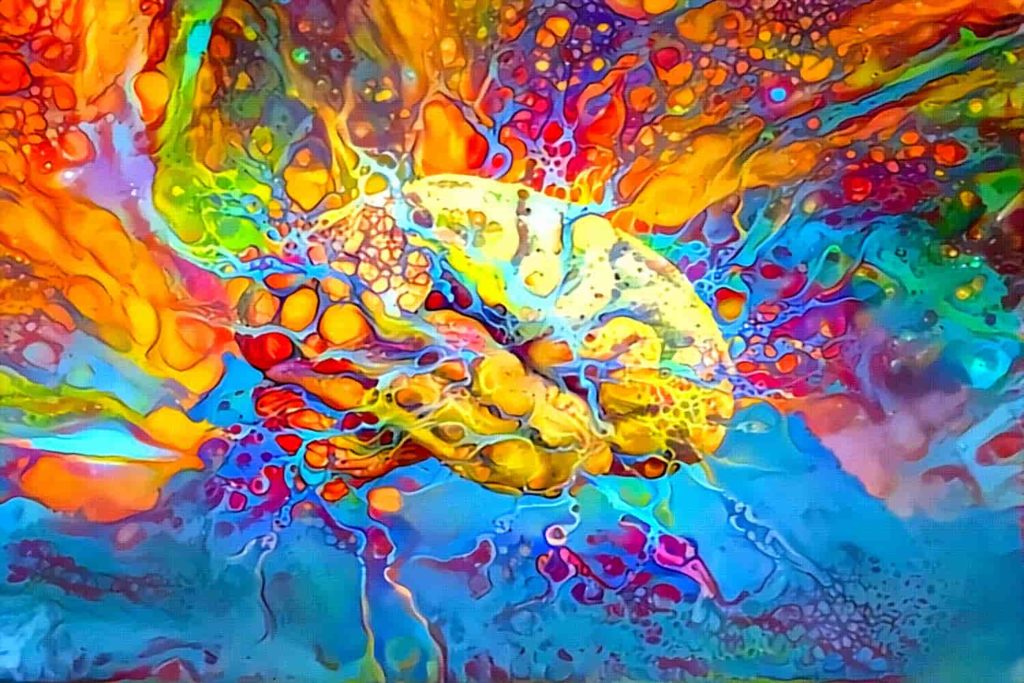
Both the lived experiences of creative people and the scientific evidence indicate the strong connection between walking and imagination. Walking has not only been a stimulus to creativity, but also to something more transcendental.
Walking in Spiritual History
Short daily walks may improve health and spur on creativity, but longer walking adventures may morph into the more costly hobby of travel. I was bitten by the travel bug as an adolescent and have loved treks of all kinds ever since, whether by plane, by ship, or by foot.
When I decided to go to graduate school, it seemed logical to explore some aspect of travel. I ended up studying literature, and specifically the representation of travel in medieval texts. Some of those historical travels included walking for spiritual purposes.
My dissertation focused on literature from what is today northern Spain, and the religious texts at the project’s center were mostly Christian. I became deeply familiar with various modes of medieval spiritual travel. Pilgrimage (travel to a place of particular religious significance) is the most famous type of spiritual journey of the Middle Ages. Many medieval pilgrimages, like modern ones, were undertaken on foot.
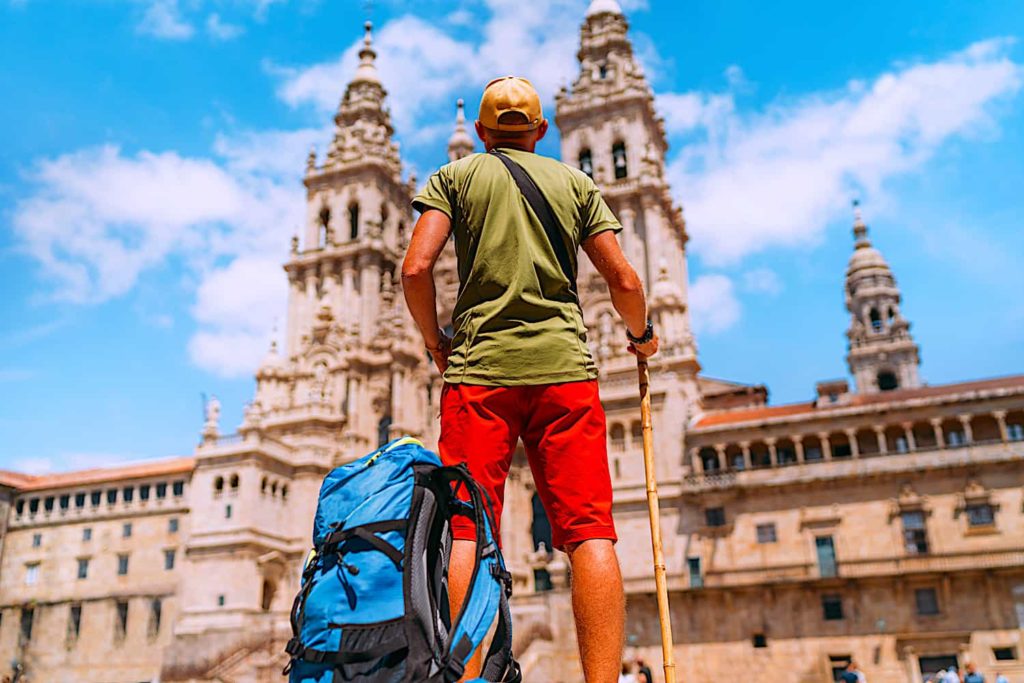
Pilgrimage is the best-known type of medieval religious travel, but it is far from the only mode of ambulatory spirituality. There were also men and women in the Middle Ages whose devotional practice was walking without a fixed endpoint. They were eremitic wanderers who devoted themselves to prayerful roaming. This type of spirituality became more codified in the later Middle Ages with the rise of mendicant orders, most notably the Franciscans and Dominicans.
Another type of medieval walking devotion had a strong resurgence in the late 1990s and first decade of the new millennium. Labyrinths in the Christian tradition are maze-like designs planned out on the floors of cathedrals or in gardens. The idea, in both medieval times and the present, is for devotees to follow the twisting patterns of the labyrinth and engage in prayer or contemplation as they walk.
Walking With World Religions
Christianity is far from the only tradition that has walking or spiritual travel as a practice. The other Abrahamic religions also have walking or traveling components. In early Judaism, there was a requirement of regular visits to the Temple in Jerusalem. In modern practice, many adherents to Judaism put special emphasis on traveling to Israel at least once in a lifetime. In Islam, the haj is the obligation of Muslims, at least those who are physically and financially able, to make a pilgrimage to the holy sites at Mecca.
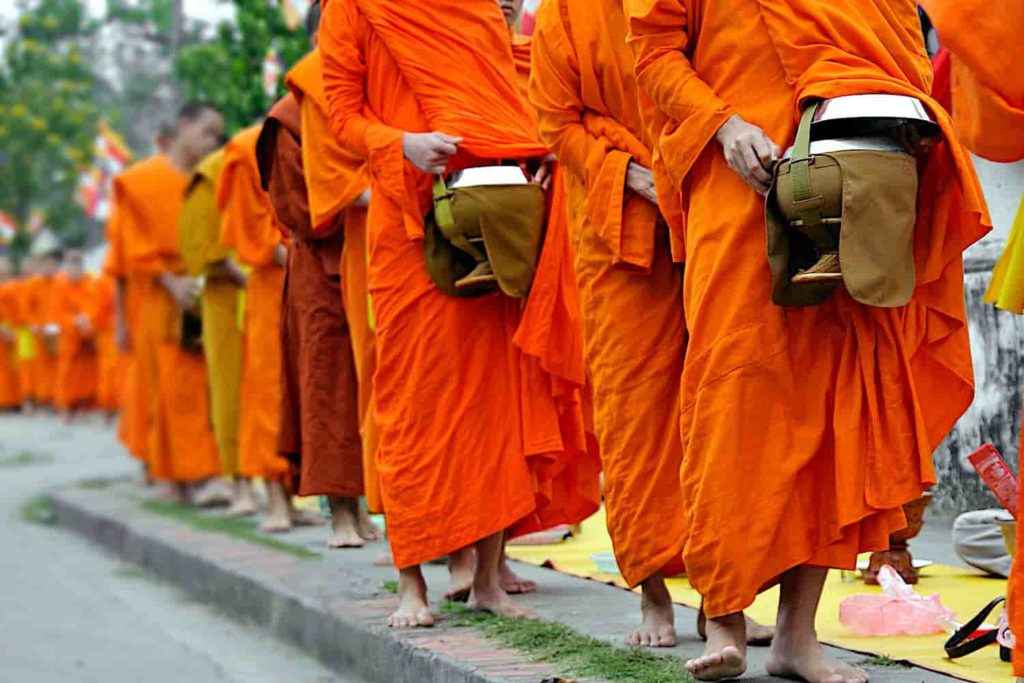
Beyond the religions with origins in the Middle East, many other faith traditions and cultural systems incorporate walking that is imbued with spiritual significance. Various forms of Buddhism include walking meditations as a part of broader meditative practices. Within Indigenous communities in parts of Australia, traditional rites of passage involve walking in the wilderness to mark the transition from youth to adulthood. Anglophone Australians have often grouped these traditions together under the umbrella term “Walkabout.”
Long before brain science allowed us proof of the connections between walking and creativity, cultures in many parts of the world harnessed the spiritual power of walking for higher purposes.
The “Inbetweenness” of It All
My favorite time to go on walks is the springtime when trees bud, flowers bloom, and temperatures are neither too cold nor too hot. During my walk through the gardens at Marian University, I reflected on the “inbetweenness” of spring, but also that of walking, creativity, and spirituality.
When you are on a walk, you are inherently in a state of inbetween. You are between “coming from” and “going to.” The journey is quintessentially a place and time in the middle.
Creativity is also an inbetween phenomenon. The brain state associated with inspiration, transient hypofrontality, is located somewhere between concentration and mindlessness. In order to be creative with whatever material (music, food, business, or art) you must immerse yourself in the topic through experience or study. Moments of inspiration rarely come during deep concentration; those moments often arrive after the concentration while engaging in a repetitive activity that lets your mind wander. We might say that walking (or swimming, or knitting, or taking a bath) lets your mind go for walk. In that middle state between concentration and complete detachment, the magic of transient hypofrontality occurs, and the brain can form new imaginative connections.
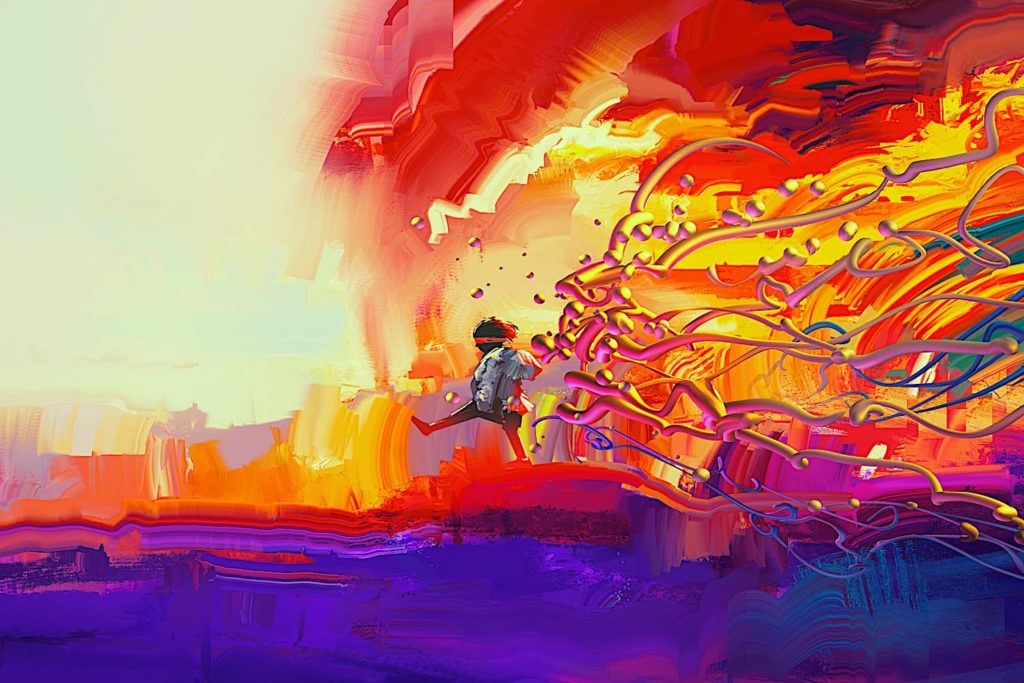
Spirituality, prayer, contemplation, and meditation are also inherently inbetween states. They are neither completely in this world, nor completely in the beyond. They happen to or through humans, but somehow transcend the human condition.
The fact that my realization of the inbetweenness of walking, creativity, and spirituality came during the spring, a time between the cold of winter and the heat of summer, now makes complete sense.
Springtime Festivals
Many religions and cultures have developed holidays or festivals during the inbetween season of springtime. These holidays are often moveable in the sense that they can fall on a range of dates. Such festivals include the Cherry Blossom Festival of Japan, Buddha’s Birthday (celebrated on different dates throughout the Buddhist world), or Holi, the Hindu Festival of Colors.
In Judeo-Christian traditions, springtime is also significant. In Judaism, Passover is the most important springtime holiday; it marks the Biblical flight of the Israelites from slavery in Egypt. Christianity, which grew out of Judaism, also celebrates some of its greatest mysteries in the spring. At this time, Christians commemorate the death and resurrection of Jesus, a Jew who was celebrating Passover with his followers when the events commemorated during Holy Week occurred. Early Christianity placed Easter in the spring and merged it with pagan traditions of springtime renewal (think Easter bunnies and baskets of colorful eggs).
This year, Islam’s holy month of Ramadan also falls during the spring (although it can be at any time of the solar/calendar year). So this year in April, all three Abrahamic religions are celebrating some of their holiest days at the same time.
Of course, not everyone considers themselves religious or even spiritual. I have not been a particularly religious person of late, and my current spiritual life has mostly been an unadorned search for peace. In this way, my simple springtime walk in the Marian University gardens was a significant contemplative experience.
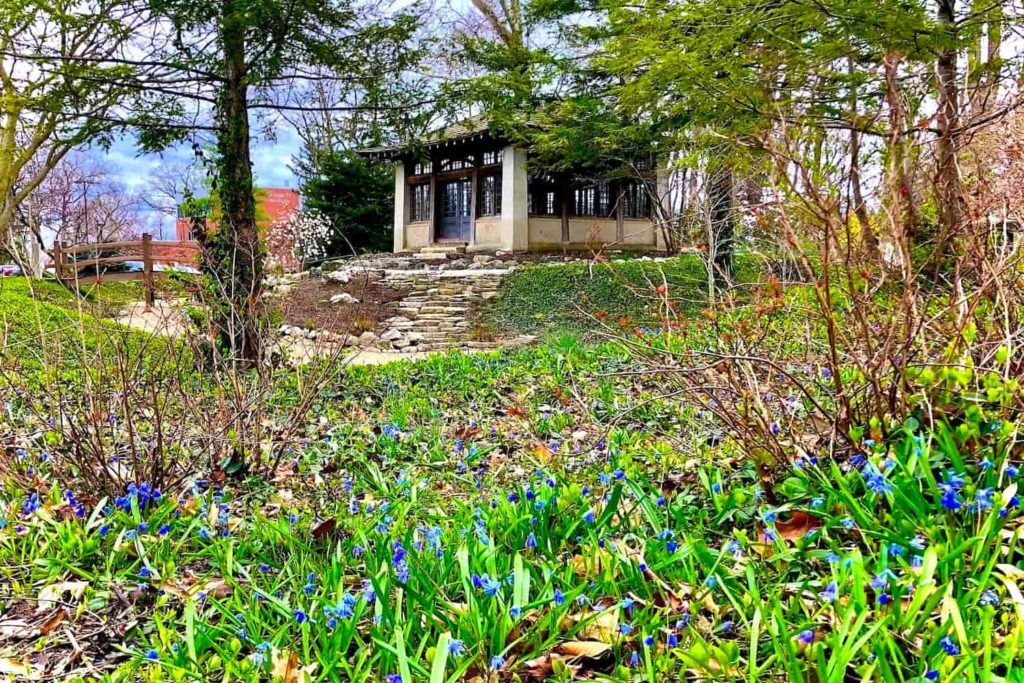
Maybe like me, your current spiritual practice doesn’t involve a specific spring festival. Or maybe you are a religious person who celebrates Ramadan, Passover, Easter, Holi, or any number of other official holidays. Whatever your experience, I wish you happy rites of spring. Maybe this year you’ll add some walks to your springtime rituals. And perhaps in the process, you’ll experience some creativity, or even some peace, in the space and time of the inbetween.